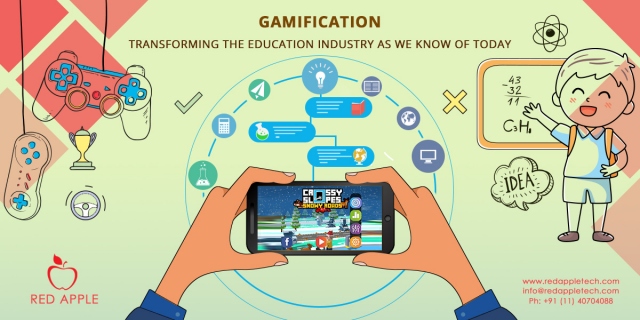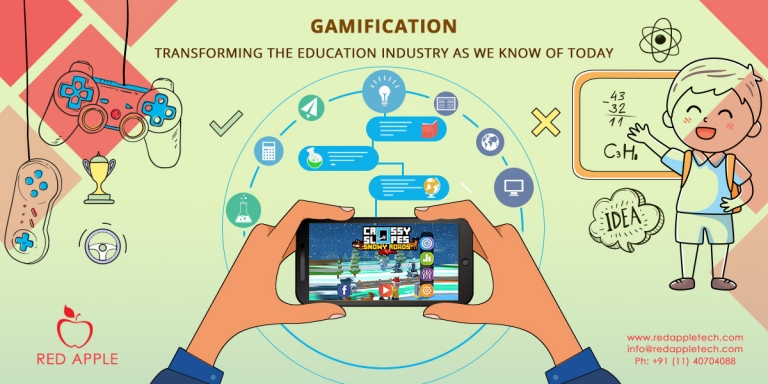
The concept of gamification refers to the use of the game as a learning tool, which facilitates the process, involves students and enhances teaching. Technology is revolutionizing education. It is undoubted. But its use linked to other innovative techniques and new approaches can multiply its effects. The concept of gamification refers to the use of the game as a learning tool, which facilitates the learning process.
The gamification is applied to various fields, but the change of paradigm involved in the educational level, making the student become a player, involves a series of changes that transform the learning environment. The emotions play a leading role and the student participates in different dynamics, with the mechanics of the games, to be an actor in the teaching, a character in the game, who gets involved in his educational process.
The children of today have changed, and it seems as if they only want to go out with their friends or to dedicate themselves to any other activity that does not involve studying. And in part, they are right. Any of us has children, cousins or acquaintances who are not able to leave their screen and many already say that we have lost the ability to retain information due to technology.
On the other hand, if we compare the time that children invest in video games with the hours of study, we will realize that something is failing. There is no lack of interest, but a desire. And it is at that point, when many will think that games reduce our desire to learn and are totally counterproductive to study, but it is actually the opposite.
The children of today, the so-called Generation Y have a passion for learning, but only if they are interested in the content. We cannot pretend that people who experience high doses of social interaction, immersion in virtual worlds, and fun, memorize for 3 hours a day the “boring” notes they have taken in class. Games are an inexhaustible source of motivation, fun, and happiness for their own characteristics, and that is something that books, notes or educational materials of yesteryear cannot provide.
One of the most interesting things about people is that we are curious by nature. From childhood we love to touch everything and see what happens. Because if something likes the human being, it is learning, but times have changed, and the techniques used until now need to be renewed, because they are clearly insufficient to motivate students today. You just need to ask any child where the object store in Animal Crossing is or the list of all the attacks of their Pokémon. They know it perfectly and answer without hesitation. They are able to memorize maps larger than those of an autonomous community and retain thousands of data on hundreds of different monsters. That is the power of the games!
Does this work?
There are three very clear examples that gamification does not only work on paper:
- Duolingo is a platform that helps us to learn languages in a fun way, and very intuitive as it adapts to the knowledge that seems to be mastered, to focus on those that the student continues to fail. It also incorporates the gamification implementing points, achievements, missions, progress bars that constantly show you the level at which you are and how much is left for the next phase, in addition to having a design very similar to that of a game. Today, it is one of the most used platforms for learning languages, and it continues to grow!
- Quest to learn is a public school in New York transformed into an epic adventure. Mixing common educational materials with new technological supports have managed to turn teaching into something really fun, but above all, very effective. It is no longer about memorizing the history of classical Greece, but here the gamification translates into a mission in the library to find the lost map of an ancient civilization that will give us access to infinite wisdom. And it is not only a question of form, but also of substance. They include missions, avatars, rewards, epic battles or virtual economies within the program that motivate your students to continue learning.
- Zombie-based Learning is a book written by David Hunter, a humanities professor from Washington who tired of having his students only interested in zombies, rather than in geography classes, has developed a new teaching method by applying gamification that the students must escape from a world apocalypse in which the only way to escape from the zombies is to know perfectly the geography of the area, in order to find the best route on the map. It is a kind of game in the style of Dragons and Dungeons in which the teacher is the narrator of the story, and the students their characters.
Gamification is successful due to several reasons: on the one hand, games satisfy most of the 16 motivations that all people have; on the other hand, any type of entertainment is related to these motivations and on a larger scale, with the main elements of happiness. Get More Help from Speedy essay


















